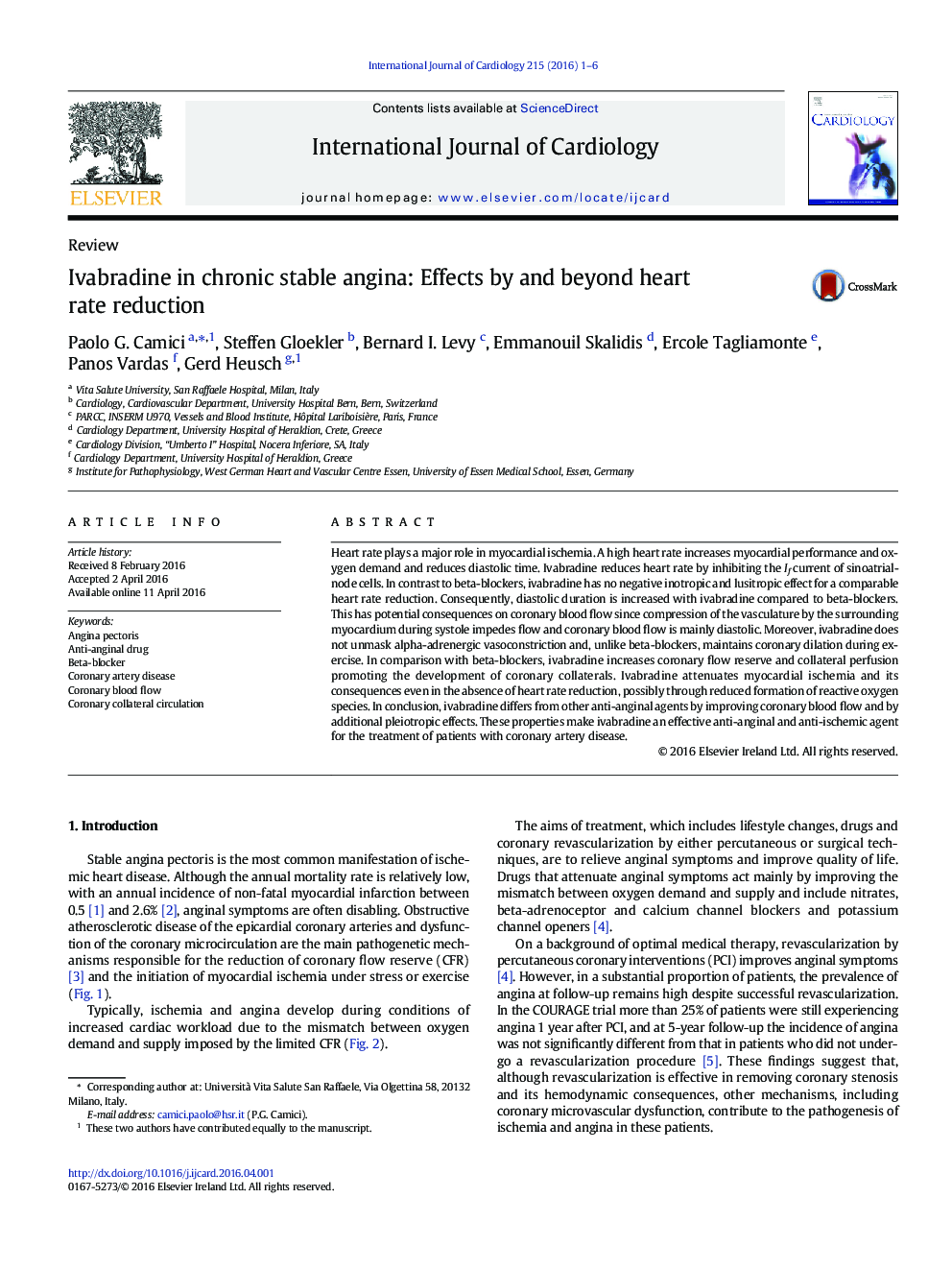| Article ID | Journal | Published Year | Pages | File Type |
|---|---|---|---|---|
| 5963859 | International Journal of Cardiology | 2016 | 6 Pages |
â¢Ivabradine is an anti-anginal agent with an original pharmacodynamic profile since it decreases HR without a negative inotropic effect and without a coronary vasoconstrictor effect.â¢Ivabradine increases diastolic duration and coronary blood flow and preserves coronary dilation during exercise.â¢Ivabradine differs from other anti-anginal agents by improving coronary blood flow and by additional pleiotropic effects.â¢These properties make ivabradine an effective anti-anginal and anti-ischemic treatment in patients with CAD.
Heart rate plays a major role in myocardial ischemia. A high heart rate increases myocardial performance and oxygen demand and reduces diastolic time. Ivabradine reduces heart rate by inhibiting the If current of sinoatrial-node cells. In contrast to beta-blockers, ivabradine has no negative inotropic and lusitropic effect for a comparable heart rate reduction. Consequently, diastolic duration is increased with ivabradine compared to beta-blockers. This has potential consequences on coronary blood flow since compression of the vasculature by the surrounding myocardium during systole impedes flow and coronary blood flow is mainly diastolic. Moreover, ivabradine does not unmask alpha-adrenergic vasoconstriction and, unlike beta-blockers, maintains coronary dilation during exercise. In comparison with beta-blockers, ivabradine increases coronary flow reserve and collateral perfusion promoting the development of coronary collaterals. Ivabradine attenuates myocardial ischemia and its consequences even in the absence of heart rate reduction, possibly through reduced formation of reactive oxygen species. In conclusion, ivabradine differs from other anti-anginal agents by improving coronary blood flow and by additional pleiotropic effects. These properties make ivabradine an effective anti-anginal and anti-ischemic agent for the treatment of patients with coronary artery disease.
